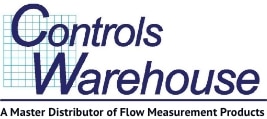Cold / Hot Water, Irrigation, Wastewater
While most flowmeters will work well on water service, there are meters specifically designed for water service, providing the best combination of cost vs. performance. A typical cold water meter will have a bronze or plastic body with plastic internals.
A few meter designs dominate the cold water meter market including oscilating piston, nutating disc, and multi-jet. They all have their particular advantages, but all cold water meters must meet minimum specifications set forth by the AWWA.
For hot water meters you are limited to multi-jet or other ‘turbine-type’ meters. P.D. meters cannot be used for hot water service.
Cold & Hot Water Meter Selection
You call and say that you want a 3/4″ meter for water service. If the person you are talking to knows meters and wants to give you the best possible selection, he will say “Do you want a 5/8 x 3/4 or a 3/4 x 3/4?” The normal reaction is “Why would I want a meter with a 5/8″ inlet and a 3/4″ outlet?” Fortunately, that is not what these fractions mean.
At one time, before design improvements which have come about in the early ’90’s, we would tell people:
The first fraction is the chamber capacity:
- 5/8 meant a 25 GPM capacity with a 13 psig pressure drop
- 3/4 meant a 30 GPM capacity with a 13 psig pressure drop
- 1 meant a 50 GPM capacity with a 13 psig pressure drop (seldom used)
Note that the second fraction is not the meter end connection, but the line size the meter will install into when the coupling connections are used. The cases on meters which comply with AWWA C700 (American Water Works Assoc) have straight threads, which are 1 line size over the size pipe. Here are the actual threads:
- 5/8 x 1/2 meter Actual end threads are 3/4 x 14 TPI, NPSM (male)
- 5/8 x 3/4 meter Actual end threads are 1″ x 11 TPI, NPSM (male)
- 3/4 x 3/4 meter Actual end threads are 1″ x 11 TPI, NPSM (male)
- 1″ meter Actual end threads are 1.5 x 11.5 TPI NPSM (male)
Why this straight thread? The meter is designed to be periodically removed and tested. If the meter ends had tapered threads, the connecting pipe coupling rides over the meter thread (interference fit). In order to remove the meter, the connecting pipe must be pushed backwards to disengage the NPT threads. But the pipe is buried under tons of dirt and will not move. By using straight threads and couplings which utilize a gasket to seal the line, one can loosen the coupling nut, spring the line slightly and pull the meter out.
If you try to screw a tapered coupling (FIP, NPT) to the meter, it will leak. Use the couplings offered with the meters.
Irrigation & Wastewater Meter Selection
We have three choices of flowmeter when it comes to dirty flows like irrigation and wastewater — Doppler, Magnetic, and Propeller Flowmeters.
Doppler ultrasonic flowmeters measure liquid flow from the outside of full pipes. A typical system incorporates a transmitter w/totalizer and a transducer. The transducer is mounted to the exterior of the pipe. An ultrasonic signal, generated by the transmitter, is emitted through the transducers into the flowing liquid and is then reflected back by the discontinuities. The transmitter measures the difference between the output and input frequency and converts the frequency difference into electronic pulses. These pulses are scaled and totaled for flow quantity.
Magnetic flowmeters are close to being the ideal flowmeter for liquids, i.e. all solid state, no moving parts, accuracy’s down to 0.2% of rate, capable of handling most corrosive fluids. The measuring tube is an open pipe, you could run tree branches through the meter without hurting it. If the fluid is a conductor, there is very little this meter cannot handle.
Propeller meters are bulk water meters, designed specifically to handle dirty fluids. Originally these meters were designed for the irrigation market, where the water can be silt laden, have plant material, small rocks, etc. There are only three propeller blades and they have a very long body with the front edges angled backwards. This allows vegetation to hit the rotor and slide off of it without catching. Propeller meters are a cost effective solution to a very dirty problem.
